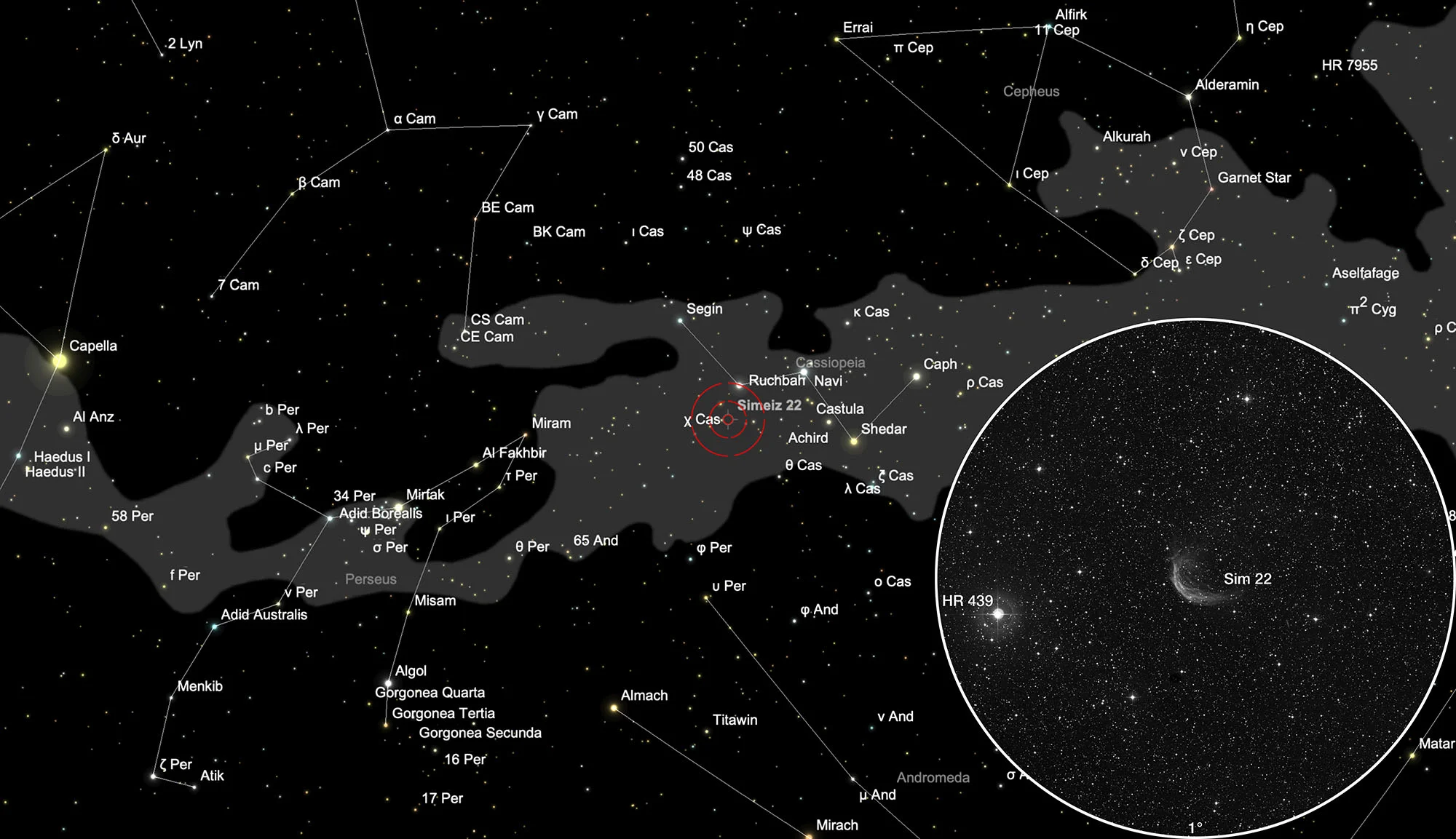Planetary Nebula Simeis 22

History
The emission nebula Simeis 22 (Sim 22, S 22) was discovered in the early 1950s by the Russian astronomers Grigory Abramovich Shajn and Vera Fedorovna Gaze at the Simeis Observatory on the Crimean Peninsula. [402] Regardless of this discovery, the American astronomer Stewart Sharpless found the same emission nebula while searching the photo plates of the «Palomar Observatory Sky Survey» made with the 48 inch Schmidt telescope and published it in 1959 as Sh 2-188 together with a total of 313 H-II regions in a catalog. [310]
Physical Properties
Simeis 22 shows similarities to the Medusa Nebula (Abell 21) and was first thought to be a supernova remnant due to its size and filamentous structure. Studies with the 300 feet radio telescope at Green Bank, West Virginia, in 1966 revealed that the nebula emits radio emissions of thermal origin, which is uncharacteristic of supernova remnants. [403] Spectroscopic investigations revealed that the nebula is moving towards us with a mean radial speed of -26 km/s ± 10 km/s, the outer envelope with a speed of about 35 km/s and single filaments with 60-65 km/s expand. This is about one to two powers of ten too low and atypical for supernovae. [404] Simeis 22 is a planetary nebula with an estimated age of 22'500 ± 2'500 years. The asymmetric shape was caused by interaction with interstellar medium. The nebula is at a distance of 850+500−420 pc and has a diameter of about 2.5 pc. [405]
| Designations | PN G128.0-04.1: Simeiz 22, PK , Sh 2-188 |
| Right Ascension (J2000.0) | 01h 30m 40s |
| Declination (J2000.0) | +58° 22' 01" |
| Dimensions | 340." (optical) |
| Radial Velocity | -26. ± 10. km/s |
| Expansion Velocity | 40. (O-III) km/s |
| C-Star Magnitude | U: 16.43, B: 17.43, V: 17.44 |
| Discoverer | SHARPLESS 1959 |
Finder Chart
The planetary nebula Simeis 22 is located in the constellation of Cassiopeia, about 22 arc minutes west of the 5.7 mag star HR 439. On 18 October it is in opposition to the Sun and culminates at local midnight. The constellation is circumpolar in central Europe, but the best viewing time is June to March, when it is highest at night.
Visual Observation
400 mm Aperture: The position of the nebula is clearly identifiable from the surrounding stars. Without a filter, nothing is recognisable at this point. With O-III, at most the faint hint of a faint nebula can be guessed at with indirect vision. The nebula is much too faint to be able to recognise details. — 400 mm f/4.5 Taurus Dobsonian, Ibergeregg, SQM 21.2, 26. 11. 2022, Bernd Nies
